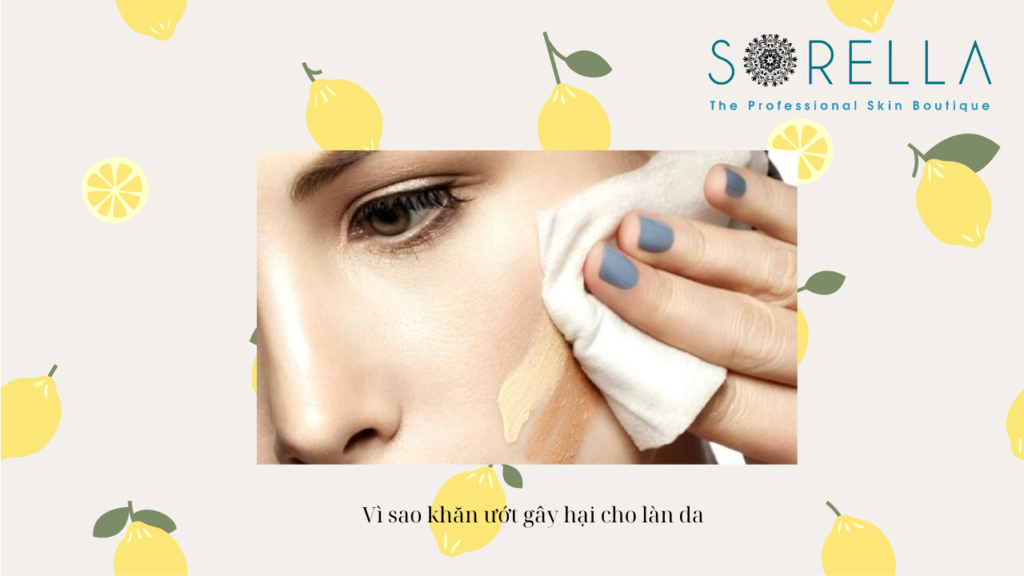Bí quyết làm đẹp
SHAVING – 5+ THINGS YOU NEED TO KNOW BEFORE SHAVING THAT EVERYONE SHOULD CONSIDER
Shaving is one of the oldest and most common methods to remove unwanted hair and stubble from both men and women. This method is performed using razors or tools with sharp blades to shave hair close to the skin’s surface.
This method is also popular among men for removing beards, particularly as part of daily personal hygiene. For women, shaving is the most common method to remove hair from underarms, legs, and the bikini area.
Shaving for men became a trend in the early 20th century. This habit originated from military requirements during World War I, where soldiers were required to shave their beards to wear gas masks during chemical warfare.
How should you Shave?
How should you Shave? There are two basic methods for shaving. The first method is “manual or wet shaving,” using straight razors or safety razors. The second method is “dry shaving,” using electric shavers.
When performing manual or wet shaving, the area to be shaved is wetted with soap, shaving cream, or shaving gel before proceeding.
The straight razor is the origin of all shaving tools. It is a blade sharpened on a stone to create a very sharp thin edge, then smoothed with a leather strop. However, using a straight razor requires technique and should only be performed by professional barbers.
In the early 20th century, King Gillette revolutionized shaving by developing the safety razor.
Disposable safety razors replaced the need for hand-sharpening with thin stainless steel blades placed in a protective device, minimizing the risk of injury.
King Gillette’s invention allowed people to shave at home, and today’s disposable and safety razors are based on this design. Modern razors often have multiple blades, lubricating strips, and a swivel head.
Dry shaving is a method of shaving without using water or shaving cream. In the 1920s, Jacob Schick invented the electric razor and the dry shaving method. Inside an electric razor, the blades are hidden beneath a foil.
>> See more: 7+ Tips for Bikini Waxing that You Should Know
How to shave effectively?
Who is suitable for Shaving?
Who is suitable for Shaving? Shaving is an appropriate hair removal method for anyone seeking to eliminate unwanted hair, regardless of gender. Both men and women commonly use shaving to address hair growth on various body parts, including mustaches, beards, eyebrows, legs, arms, underarms, pubic areas, and the bikini line.
The versatility of shaving allows it to be performed on both extensive areas, like the legs and arms, and more delicate regions, such as the face and bikini area.
The procedure itself is straightforward, making it accessible for most people to perform at home without needing professional assistance. When executed correctly, shaving is a highly effective and painless method of hair removal. One of its significant advantages is its cost-effectiveness; the tools required, such as razors and shaving creams, are relatively inexpensive and widely available.
This affordability makes shaving an attractive option for those looking to manage their hair removal needs without incurring substantial expenses. Furthermore, the convenience and ease of shaving contribute to its popularity, allowing individuals to quickly and efficiently achieve smooth, hair-free skin.
>> See more: What is Hifu? 5+ benefits of Hifu for women
What Are the Side Effects of Shaving?
Shaving, when performed correctly, is generally a safe and painless method of hair removal. However, like any grooming practice, it can lead to some side effects, particularly when using manual or wet shaving techniques. Awareness of these potential side effects and employing proper shaving methods can help minimize risks. Some of the common side effects include:
- Itching: This can occur when the hair starts to grow back, causing irritation on the skin’s surface.
- Cuts from shaving: Small nicks and cuts are common, especially if the razor is not sharp enough or if proper shaving techniques are not followed.
- Razor burn: This is a type of skin irritation that appears as red, itchy patches and is often caused by shaving too quickly, using a dull blade, or not using enough lubrication.
- Pimples or pustules (folliculitis): Shaving can cause inflammation of the hair follicles, leading to small, red bumps that can be itchy or painful.
- Ingrown hairs (pseudo-folliculitis): These occur when shaved hairs grow back into the skin, causing inflammation and bumps.
- Hair follicle inflammation (folliculitis): This is a deeper infection of the hair follicles that can cause red, swollen, and painful bumps.
- Irritant contact dermatitis: This type of dermatitis is caused by an irritation from the shaving products or the physical act of shaving, leading to red, inflamed, and itchy skin.
To minimize these side effects, it is crucial to follow proper shaving techniques and maintain good personal hygiene. Here are some tips:
- Use a sharp, clean razor: Replace blades regularly to avoid dullness, which can cause cuts and razor burn.
- Prepare the skin: Wash the area with warm water and use a gentle exfoliant to remove dead skin cells. Apply a shaving cream or gel to provide a protective barrier and reduce friction.
- Shave in the direction of hair growth: This helps prevent irritation and ingrown hairs.
- Use light, gentle strokes: Avoid pressing too hard on the razor.
- Rinse the blade frequently: This helps remove hair and shaving cream buildup, ensuring a cleaner shave.
- Moisturize after shaving: Apply a soothing, alcohol-free aftershave or moisturizer to calm the skin and restore moisture.
- Maintain hygiene: Clean the razor after each use and store it in a dry place to prevent bacterial growth.
By following these guidelines, individuals can significantly reduce the likelihood of experiencing adverse effects from shaving and maintain smooth, healthy skin.
>> See more: Ear Piercing and 14 things about it that you should know
Should You Use Shaving Cream?
Shaving cream moisturizes the skin and softens hair, making the shaving process easier. Additionally, using a protective layer of cream to avoid cutting the top layer of skin is important.
Modern shaving creams used for wet shaving are usually provided in spray cans. The propellant helps to create foam in the can and fill the cream with tiny bubbles. Shaving cream is less irritating and provides more moisture than soap. Besides water, common ingredients in shaving cream include:
- Stearic acid and triethanolamine: surfactants (like soap) that help remove dirt and oil from the skin’s surface while retaining moisture.
- Lanolin and polyoxyethylene sorbitan monostearate: emulsifiers to combine the ingredients.
- Glycerin: solvent and softener.
What to Consider When Shaving?
When shaving, consider the following to avoid side effects:
- Use a new, sharp, and safe razor. Replace the blade when it becomes dull or has nicks on the surface.
- Clean the area to be shaved with a moisturizer and warm water to soften the hair and keep the skin moist.
- Apply shaving cream or gel to the area and leave it for 2-3 minutes to soften the hair and shave in one go. Use a brush to apply the cream and create foam, helping to lift the hair and ensure better cream coverage.
- People with sensitive skin should choose gentle products. In this case, water-based shaving cream is recommended, although it may clog the blade. However, never use soap to shave sensitive skin.
- Always shave in the direction of hair growth. Although shaving against the direction of hair growth can give a closer shave, it can cause razor burn (irritant dermatitis) and ingrown hairs.
- Rinse the blade frequently to clean hair and shaving cream.
- Limit shaving the same area multiple times to avoid irritation.
- After shaving, use cold water to cool the skin and reduce inflammation, then apply moisturizer to provide moisture to the skin.
- If you experience irritation or itching after shaving, you can use a mild corticosteroid (like Hydrocortisone) to reduce symptoms. Avoid shaving again until the area is no longer irritated.
Safety Guidelines for Trimming Pubic Hair
To trim pubic hair without affecting overall health, you can follow these steps:
- Use appropriate tools: Ensure razors and trimming scissors are clean, sharp, and rust-free. This helps avoid causing damage or cuts to the skin.
- Perform in a well-lit area and use a small mirror: Ensure you have enough light to see well and avoid unnecessary injuries. Use a small mirror to see the area clearly.
- Test skin reactions to hair removal chemicals: Before applying hair removal chemicals to the pubic area, test a small amount on another part of the skin (such as the arm or leg) to check for allergic reactions. If there are any severe reactions, such as swelling, rashes, difficulty breathing, or fainting, seek medical assistance immediately.
- Keep the pubic area clean: After trimming pubic hair, ensure the area remains clean to prevent infection. Check regularly for signs of irritation or infection, such as swelling, redness, pain, or pus.
- Consult a professional: If you are unsure about how to trim pubic hair safely and effectively, consult a dermatologist or a specialist in this field. They can provide guidance and advice for proper and safe execution.
- Use over-the-counter creams and ointments: If you experience minor cuts, itching, or skin irritation after trimming pubic hair, you can use over-the-counter creams or ointments to alleviate these symptoms. However, if the symptoms are painful or severe, visit a doctor promptly for appropriate consultation and treatment.
If you need more information or assistance with anything else, please let Sorella Beauty & Spa know.
Tư vấn chuyên môn bài viết:
TS.BÁC SĨ NGUYỄN HỮU QUANG
- Nâng mũi là gì – Hậu quả của việc nâng mũi hỏng
- Nên nâng mũi bằng chỉ hay tiêm filler? 1 vài lưu ý khi nâng mũi
- Tìm hiểu về trụ Implant SIC: 3 + ưu điểm của trụ Implant SIC
- Tác dụng của Vitamin E, 1 số lưu ý giúp chị em sử dụng Vitamin E đúng cách
- Sinh Năm 1967 Mệnh Gì ? Tuổi Đinh Mùi Hợp Màu Nào ? Tuổi Nào ?
Bài viết cùng chủ đề:
-
Nên lựa chọn Rejuran hay Karisma?
-
So sánh Karisma và Profhilo – 2 phương pháp trẻ hóa da tầng sâu đỉnh cao
-
Cách diệt chấy rận hiệu quả ngay tại nhà, 8 phương pháp tiêu diệt chấy rận hiệu quả
-
Có nên dùng khăn ướt để tẩy trang? Cẩn thận khi dùng khăn giấy ướt giúp chăm sóc làn da của bạn, 1 vài thành phần của giáy ướt có hại cho da


 中文 (中国)
中文 (中国) 한국어
한국어 English
English









